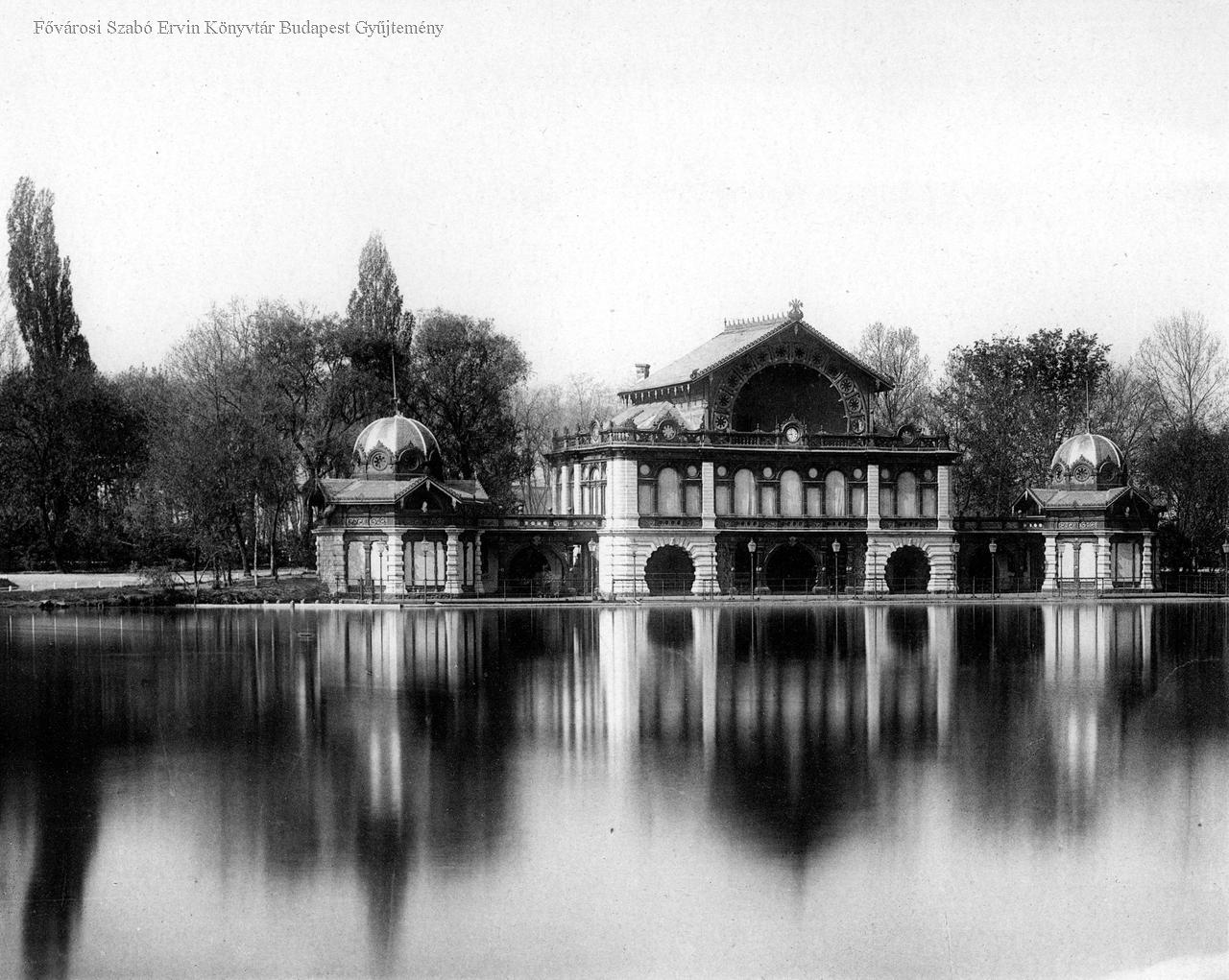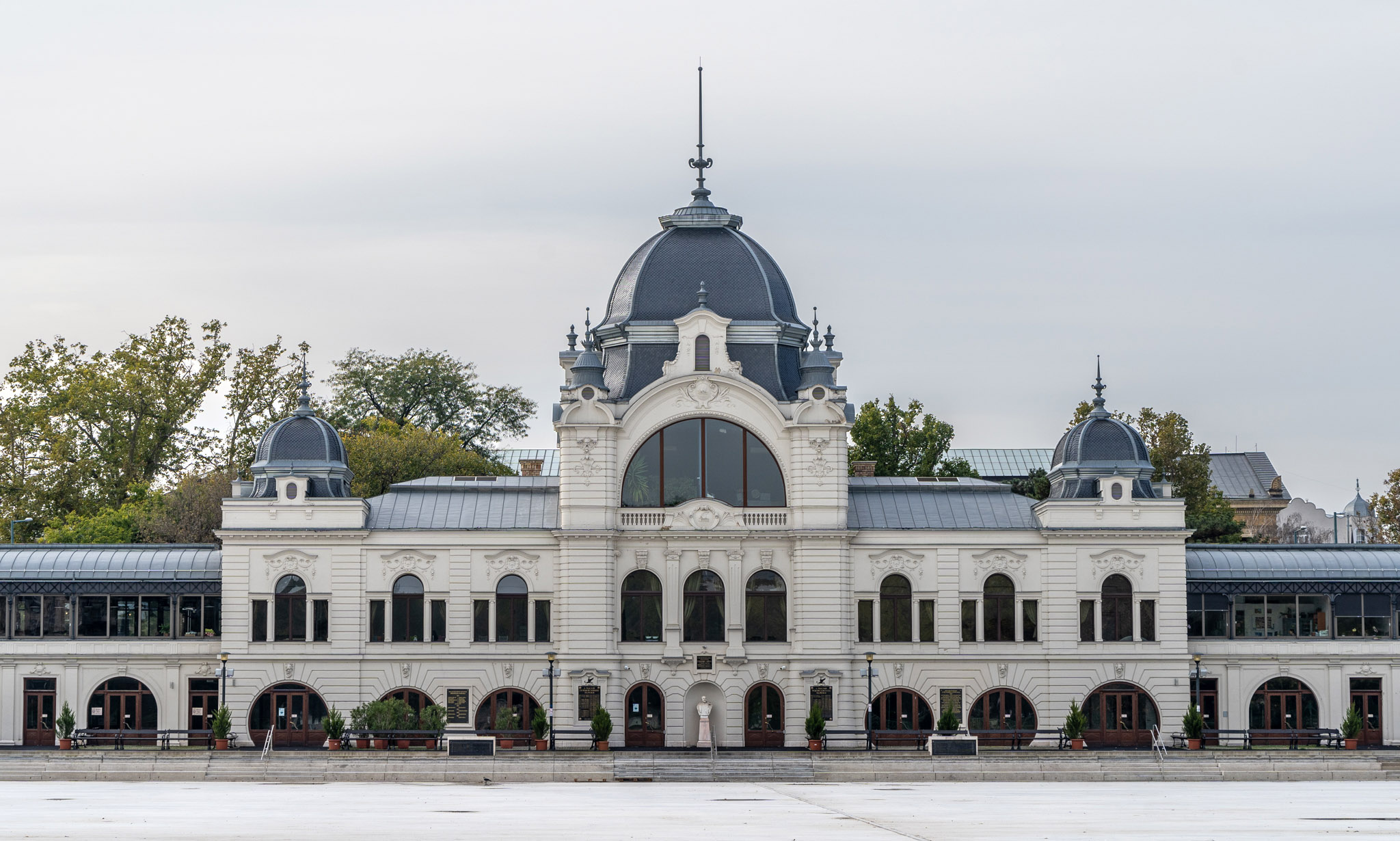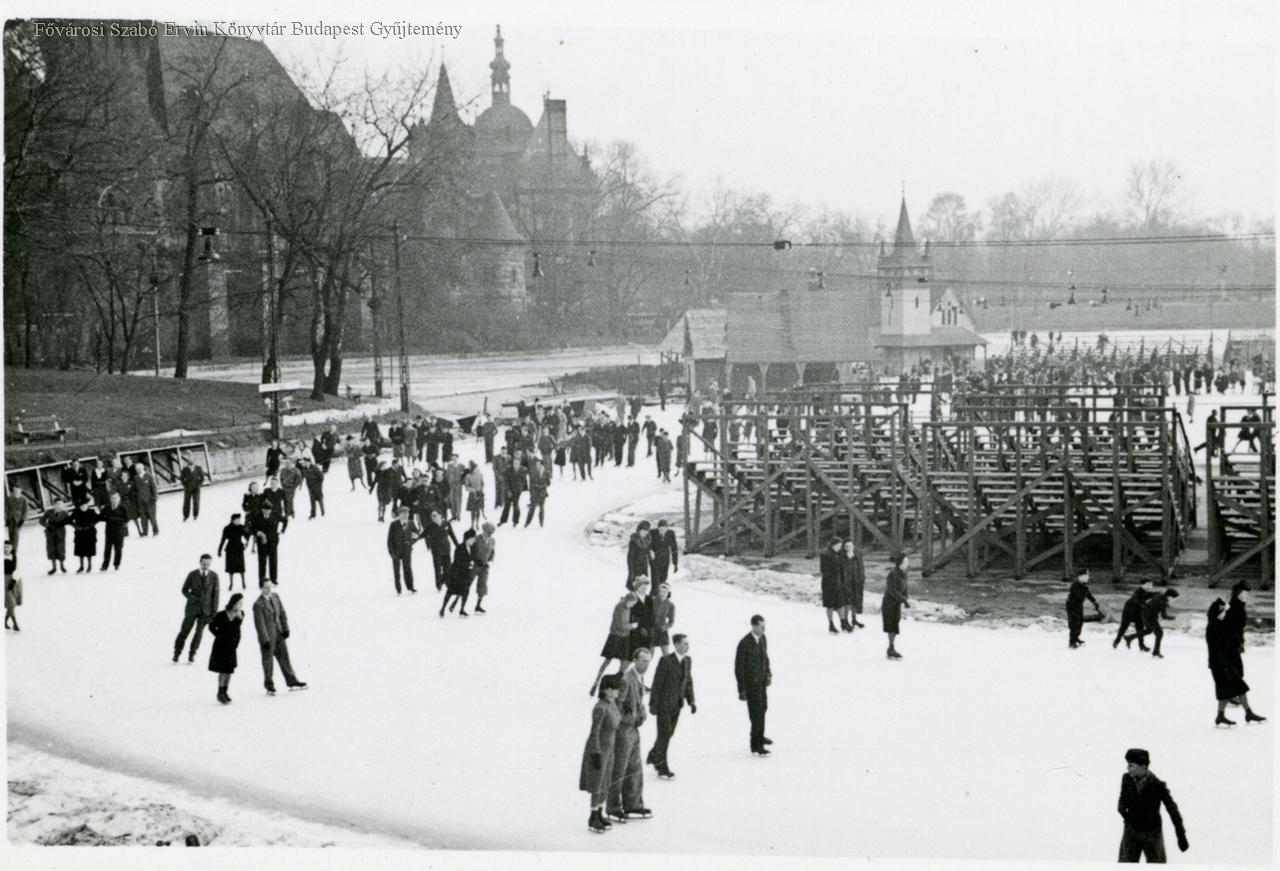An important event on the road to the creation of the ice rink was the formation of the Pest Skating Association, later the Budapest Skating Association, in the card room of the Steingasser (Petőfi) Café on the Danube Bank on 12 November 1869, which received permission from the city council to create a skating rink every winter on a part of the City Park Lake. Thus, from 29 January 1870, the ladies and gentlemen of Pest could indulge in their passion, skating, free of charge.
Next to the lake, the first “skating hall" was erected, which was a two-hall small wooden booth. The building burned down in 1874. The city administration then gave permission for the construction of the new building, and the Neo-Renaissance hall was erected according to the plans of Ödön Lechner and was handed over in 1875. It was later demolished in 1893 in preparation for the millennium celebrations, and a new Neo-Baroque skating rink was built in 1895 according to the plans of Imre Francsek. The lake gained its present form at this time.

The skating hall designed by Ödön Lechner, built in 1875, was demolished in 1893 (Photo: FSZEK Budapest Collection)

The main building of the City Park Ice Rink, which still stands today, was built according to the plans of Imre Francsek (Photo: Balázs
Both/PestBuda)
The skating season was determined by the weather, so in the case of a mild winter, when the lake froze only in January, sports lovers could indulge in their hobby for a shorter
period. The Skating Association had already proposed the construction of an ice rink in the first decade of the 20th century, but due to the outbreak of World War I, they had to wait another decade.
Finally, by 1926, the 80x70-metre, 5,600-square-metre ice rink, the second mechanically cooled ice rink of the continent, was completed according to the plans of engineers Gábor Hollerung, Géza Krencsey, Béla Krempels and Béla Bauer. Eduard Engelmann from Vienna also contributed as an expert. The machine house was located on the south side of the existing skating hall, the locker rooms and the cloakrooms were on the north. A total of 62 kilometres of gas pipes with a diameter of 4.2 centimetres were embedded in the concrete of the lake bed. Salt water circulated in the pipes, cooled to minus 7-12 degrees by the ammonia evaporated in the closed system, and the water applied to the concrete was frozen by the cold pipes.

One year before the handover of the ice rink - this is how the skating rink in City Park looked in 1925 (Photo: FSZEK Budapest Collection)
The test of the cooling equipment was held on 19 November 1926, and the technical handover was on 20 November. The public could only take possession of half of the area at that time because the machines could not withstand the freezing of the entire track. The significance of the ice rink was clear, as it extended the season, allowing ice skating for three months a year. Thanks to artificial ice, hockey sports also flourished, and in the 1930s, City Park became the European citadel of ice hockey and figure skating. The World Figure Skating Championships were also held here in 1929, 1935 and 1939.
In World War II, the left wing of the building was completely destroyed and the track itself became unusable. Partial reconstruction took place in 1947, and in 1968 the area of ice was increased. Between 2009 and 2011, the track and its building were completely renovated. At that time, the listed building was renovated to look like the 1926 version, and the wing destroyed in World War II was also rebuilt.
The 10-centimetre slope of the track has been removed, and the old concrete has been replaced by a new pavement. 198 kilometres of pipes were laid under the track and state-of-the-art ice-making and building engineering technology was installed. The area suitable for sports became 14,800 square metres after the reconstruction, and in addition to the skating rink, a 1,800-square-metre hockey rink was also built.
The City Park Ice Rink is currently the largest and oldest artificial open-air ice surface in Europe, and it has not lost any of its charm over the decades.
This year it opened just yesterday, on 19 November 2021, thus starting the skating season at the City Park Ice Rink. In the first phase, two-thirds of the 12,000-square-metre ice surface will be available for those wishing to play sports and relax. Countless programs await visitors throughout the season.
Source: MTI, Budapest Lexicon
Cover photo: The City Park Ice Rink and the building in 1937 (Source: Fortepan/Andrea Stuber)







































Hozzászólások
Log in or register to comment!
Login Registration